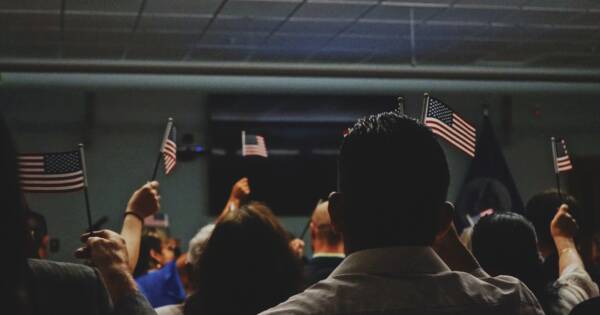Immigrants and non-immigrants wishing to work in the U.S. and employers wishing to hire them must follow specific protocol to stay compliant with immigration laws.
Many people dream of working in the United States, and millions of immigrants find successful employment after gaining legal entry to the country, while some have employment waiting on them when they arrive. As a resident of a country outside the United States, there are several legal routes to working in the U.S. Let’s take a look at the employment-based classifications of both nonimmigrant and immigrant visas that might make you eligible for U.S. employment, whether it be temporary or permanent.
Employer-Based Petitions – Temporary Workers
One of the most common ways for a nonimmigrant to work in the U.S. is for a prospective employer to file a petition, known as a Form I-129, Petition for a Nonimmigrant Worker, with the United States Citizenship and Immigration Services, also known as USCIS. If approved by USCIS, then the prospective worker can apply for a temporary worker visa with their U.S. Consulate or Embassy. Keep in mind that some types of worker categories have only a limited number of petitions approvals each year.
If USCIS approves the Form I-129, the next step is the visa application, Form DS-160, Online Nonimmigrant Visa Application. Applicants must upload a photo of themselves with their applications and be aware that an interview with consular officers may be requested. It is important to start this process as soon as possible, since interview appointment wait times can be lengthy in some locations.
For temporary workers, the intended workers’ occupation determines their suitability to work in the U.S., and it must be shown that there are no suitable candidates to fill the position from among the American public.
 Mika Baumeister/Unsplash
Mika Baumeister/UnsplashPermanent Workers
Each fiscal year, 140,000 spots open up for immigrant visas, which are for permanent workers looking to immigrate to the United States based on their job skillset or combination of skills, educational background and work experience, along with the permanent workers’ spouses and their children.
There are five preference classifications for permanent workers, and two of them require Labor Certification (EB-2 and EB-3). This certification essentially attests that there are no workers available in the U.S. to fill the available position, either due to no one being qualified or willing to do the job. The certification also attests that hiring a worker from another country will have no adverse effect on working conditions or wages of similarly employed workers in the U.S. The preferences for admission of permanent workers includes:
- First preference, or EB1. Reserved for people with extraordinary business or science/arts abilities; outstanding researchers or professors; and multinational managers and executives.
- Second preference, or EB-2. Reserved for people with advanced degrees or exceptional business or science/arts abilities.
- Third preference, or EB-3. Reserved for professionals and skilled workers
- Fourth preference, or EB-4. Reserved for some religious workers, U.S. foreign service employees, international organization retirees, minor aliens who are court wards in the U.S.
- Fifth preference, or EB-5. Reserved for business investors investing $1.8 million or $900,000 in a new commercial enterprise that will employ 10 or more workers in the U.S.
Non-Employer-Based Petitions
If you reside in a country outside the U.S. and wish to work in the U.S., you must apply with the U.S. Department of State or DOS for a visa (provided that people from your country are required to do so). In most instances, USCIS must approve your petition prior to filing this petition with the DOS or seeking admission at the border or port of entry. Prior to coming into the country, you must present yourself to an officer with Customs and Border Protection or CBP and be granted permission to enter the U.S. to engage in your declared activity.
 Sara The Freak/Unsplash
Sara The Freak/UnsplashIf you are currently in the U.S. with a lawful nonimmigrant status but without employment authorization, then you can request a change of status to a nonimmigrant status with employment authorization. You can also apply for an adjustment of status that allows you to become a lawful permanent resident. Depending on your circumstances, this application may be filed concurrently with your immigrant visa petition or may require an approval of an immigrant visa prior to applying for the adjustment.
Your change of status application may also require an employer in the U.S. to file a petition on your behalf, establishing your eligibility prior to the filing of your application. However, certain aliens, such as those with extraordinary abilities or E-1/E-2 investors or traders may be entitled to self-petition on their own.
The conditions of your stay and how long you are legally entitled to work in the United States is dependent on the type of immigration status assigned to you by the Department of Homeland Security or DHS.
Employers Hiring Undocumented Workers
Bear in mind that U.S. employers are required to verify the work authorization of every new hire using Form I-9. Failing to do so can lead to fines of up to $3,000 per worker and six months in jail. For this reason, obtaining legal authority to work in the U.S. is important not just for those wishing to come here to work but for employers looking to hire too.
An experienced immigration attorney is your best source for determining which type of visa is best for your needs, especially if you have additional family that you plan to bring into the country with you. Your attorney can guide you down the fastest and most efficient route to realizing your dream of working or even living permanently in the United States. An immigration attorney can also help employers maintain compliance with all immigration laws.






